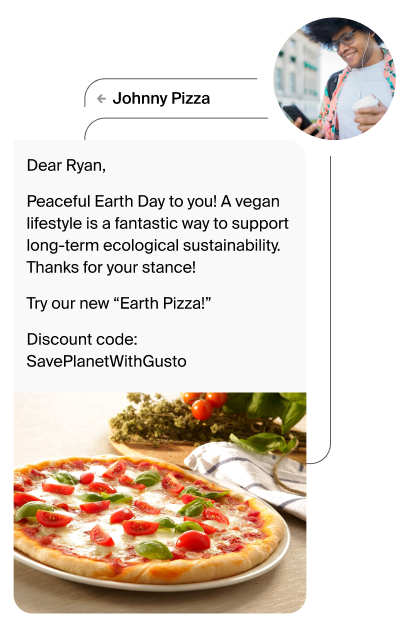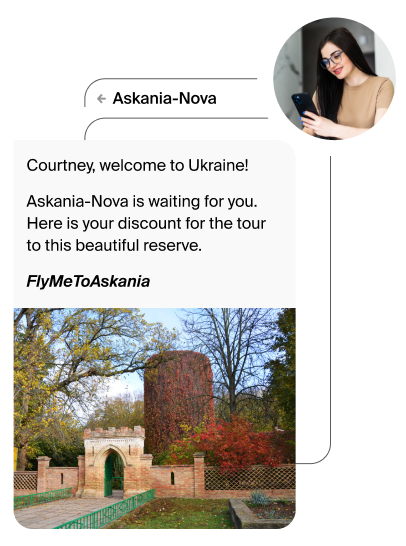Location based marketing is a must have in every marketer’s toolbox as it allows you to directly reach your customers based on their physical proximity to your service or product.
This marketing technique matches location data from smartphones to defined locations such as shopping malls, cinemas, cafés, etc. Marketers use this data to create audiences and analytics, and consequently, more relevant advertising and content to draw customers to their business.
When is location-based marketing a great idea?
Location-based marketing is an excellent fit for almost all retailers, restaurants, and other places requiring physical presence from the customer. These industries make significant use cases because of their physical footprint, which synchronises to location data.
When isn’t location-based marketing a great idea?
This strategy is less effective for products to be found almost everywhere, for example, groceries (demographic targeting would be more effective here). Regulatory organisations set other limits against creating discriminatory audiences derived from sensitive locations, such as health care points of interest.
According to Factual, when talking about location-based ads, brand marketers and agencies are stuck with the Google, Facebook, and Amazon advertising oligopoly, so 65% of them are looking for alternatives to improve advertising outcomes. Here time-honoured messaging can hit the stage. In this new article, we will figure out how messaging in combination with location-based marketing can increase your marketing ROI — discover location-based marketing tips.
Three Pillars
Geomarketing offers a variety of methodologies and instruments. All of them are useful but in different circumstances. Geotargeting, geofencing and geoconquesting have been found to be the most effective when used with messaging. Let’s dive deep into these specific tools.
1. Geotargeting
Geotargeting involves delivering messages or ads to consumers within a specific area or location: audiences are created based upon matched historical visits to real-world sites and points of interest. Thus, they must fit specific criteria regarding their activities, interests, and behaviours: people regularly seen in cafés may be identified as coffee lovers, or audiences often visiting bookstores may be marked as avid readers.
Geotargeting is a fantastic option for retargeting campaigns and special rewards for larger areas. For instance:
- As a food delivery app, you might retarget vegan users from your city with an Earth Day themed veggie pizza promo in messengers.
- As a flight company cooperating with travel agencies all around the globe, you may offer discounts through push notifications on Askania-Nova nature reserve tours to customers travelling to Ukraine if they regularly donate to environmental initiatives via your website.


2. Geofencing
According to recent studies, 25% of people say that receiving a coupon or discount code message in a store is the most rewarding type of personalisation in retail. Geofencing can fulfil this desire: it allows for setting up an automated messaging campaign that targets the users passing within a certain radius.
How does geofencing work?
1) The client approaches the store entering the geofence.
2) In real-time, CRM receives information that the client is nearby or has entered an offline point.
3) The CRM system makes calculations and determines whether to send a message to the client and selects the most appropriate channel.
4) The event is triggered — the customer receives a personalised push notification or a message
Demand for this technology is only growing. The global geofencing market is projected to grow to $3 billion by 2026, with a 26.7% CAGR in 2021-2026. Retail chains, financial institutions and banks, small and medium-sized businesses, and, surprisingly, governments implementing smart city projects can benefit from geofencing.
3. Geoconquesting
Geoconquestiong is one of the dominating mobile marketing trends for 2022. But what makes this method so special, and why does it sound so belligerent?
Geoconquesting is attracting customers away from competitors using location-based ads. These ads are sent to customers who are visiting or have visited a rival business. For instance, Android device resellers can send targeted SMS or Viber messages to customers near Apple stores across the street to convince customers to buy Xiaomi smartphones instead. But to use geoconquesting successfully, you must have accurate and complete location data. The good news is that geodata technologies are constantly evolving, and thus, the road is set to get smoother.
Case study
Location-based marketing is an area for creativity and experiment. Based on geodata, you can come up with a strategy that best suits your particular needs. For instance, Uniqlo — a Japanese casual wear retailer — found a perfect solution to become a modern classic example of thinking out of the box.
Uniqlo Check-In Chance
Challenge: To maximise buzz on the internet and bring customers to the stores during a major yearly sale.
Solution: Check-in as entertainment! A mechanism was designed so that shoppers could check-in to any of the 859 Uniqlo stores in Japan and share that via social media. Users could also win a coupon to be used only during the sales.
Impact: The campaign resulted in record-breaking crowds and sales. Over 200,000 visitors checked in, the Uniqlo website garnered 10,000 likes, and total sales came to more than 22 billion yen for three days.
Want to try the above strategy for your business? Then note, under the conditions of today, you should elaborate it: try SMS, push notifications, and especially chatbots to smoothen customers’ trip to check-in points.
Getting started with location-based marketing
After getting deeper into the theory, you can move to practice. To ensure location-based efforts will have a positive impact on your marketing ROI, consider the following measures:
1. Obey the law. Clear up any concerns with your legal team to detect all the stumbling stones and figure out the next steps. Consumer privacy should be top of mind for you.
2. Set up goals. Established clear goals and KPIs are the only way to measure results. Why do you need this campaign? Do you want to inform people about your new products or steer them away from competitors?
3. Select a targeting method! This targeting method must match your goal: geotargeting could be a wonderful way to attract former customers to your stores, while geofencing may become a fancy method to get potential shoppers’ attention.
4. Measure results! Analyse the collected data to determine optimal tactics. Geo-zone & marketing attribution analytics can help you with this task.
What is next?
According to Statista, targeted mobile advertising spendings in the United States will surpass 32 billion dollars by the end of 2023. Considering the size and influence of the American market, we may assume that enhanced uses for global location-based marketing are on the horizon soon. Contact our reputable mobile messaging experts to find out more!

